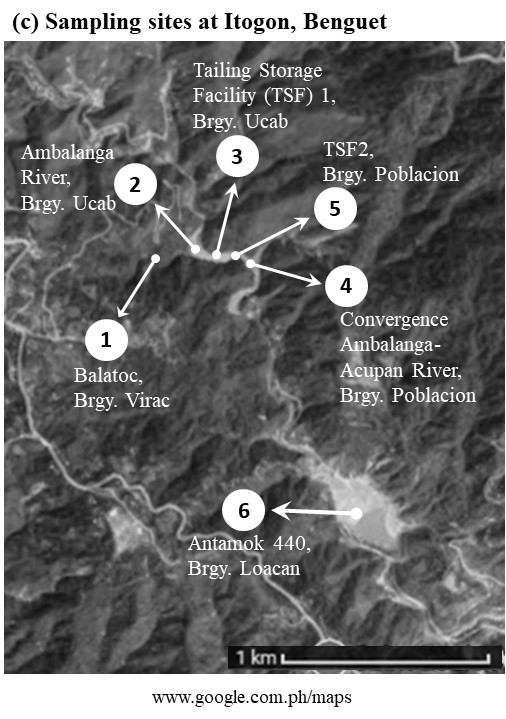Heavy Metal Tolerance and Removal Capacity of Trichoderma species Isolated from Mine Tailings in Itogon, Benguet
Main Article Content
Abstract
Waste from mining industries contains various heavy metals that can pollute the environment. Bioremediation using efficient fungi can help in eliminating these heavy metal contaminants. This study focused on the isolation, identification, and characterization of heavy metal-resistant fungi from mine tailings in Itogon, Benguet. Isolation of fungi was done by serial dilution and spread plate techniques on potato dextrose agar (PDA) with an individual heavy metal, i.e. chromium (Cr), copper (Cu), lead (Pb), zinc (Zn), and nickel (Ni). Of the 29 fungal isolates, four species were selected and molecularly identified as Trichoderma virens, T. harzianum, T. saturnisporum, and T. gamsii. Growth tolerance on PDA with increasing concentrations (200-1000 ppm) of an individual heavy metal indicated the following trend: T. virens > T. harzianum > T. gamsii > T. saturnisporum. Growth test indicates that all Trichoderma isolates can tolerate high levels of Cr and Pb, however tolerance to Cu, Zn, and Ni was species specific. Shakeflask culture using T. virens showed high lead removal (91-96%) over broad pH range while and at neutral pH, T. virens had 70% and 63% reductions for Cu and Cr, respectively. Results of this study highlights the potential of Trichoderma isolates for biological wastewater treatment in mining industries.
Article Details
Published articles are under the copyright of the Environment and Natural Resources Journal effective when the article is accepted for publication thus granting Environment and Natural Resources Journal all rights for the work so that both parties may be protected from the consequences of unauthorized use. Partially or totally publication of an article elsewhere is possible only after the consent from the editors.

